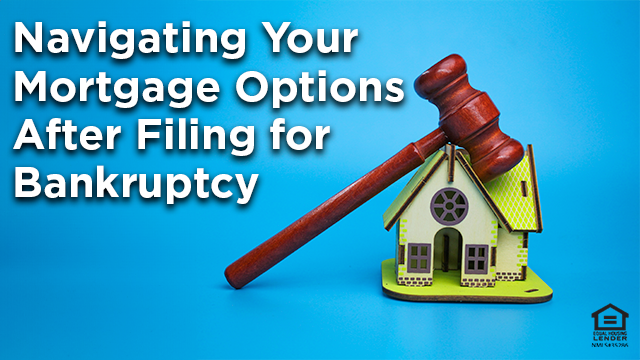
Navigating Your Mortgage Options After Filing for Bankruptcy

As bankruptcy rates increased in 2023, it became evident that many individuals and small businesses are facing economic hardships, leading them to seek debt relief through bankruptcy filings. However, there are still a number of avenues available for those looking to secure a mortgage post-bankruptcy.
Understanding the Difference: Chapter 7 vs. Chapter 13 Bankruptcy
There is a distinct difference between Chapter 7 and Chapter 13 bankruptcy.
Chapter 7 involves the liquidation of debts, whereas Chapter 13 includes a reorganization plan where debtors commit to repaying their debts over time under court supervision.
Different mortgage programs have varying requirements based on the type of bankruptcy and the borrower's financial history.
Plenty of Opportunities with FHA and VA Loans
For borrowers and veterans seeking competitive financing options, FHA and VA loans are a popular option. These government-backed loans only require two years of seasoning after a bankruptcy is discharged.
FHA and VA loans are available to individuals currently in Chapter 13 bankruptcy if they have demonstrated responsible payment behavior for at least a year.
Conventional Options: Fannie Mae, Freddie Mac, and Jumbo Loans
Conventional loan programs, such as those offered by Fannie Mae and Freddie Mac, typically require a four-year waiting period after the bankruptcy is discharged.
However, borrowers who have successfully completed a Chapter 13 repayment plan may qualify for a mortgage after just two years.
Jumbo lenders may mandate longer seasoning requirements for all post-bankruptcy borrowers, typically at least four years.
Exploring Non-QM Financing: A Flexible Alternative
For those unable to meet the criteria of traditional mortgage programs, non-QM financing is a viable alternative.
Most Non-QM lenders do not require any seasoning period, allowing borrowers to secure a mortgage immediately after bankruptcy discharge.
However, this convenience comes at a cost, as Non-QM lenders may charge higher interest rates and fees, and borrowers are expected to provide a substantial down payment, usually ranging from 20% to 30%.
The Importance of Rebuilding Your Credit
Rebuilding your credit post-bankruptcy is paramount. Establishing a positive credit history through secured cards, small loans, or other forms of credit demonstrates financial responsibility to lenders, increasing your likelihood of securing competitive financing rates and terms in the future.
Final Thoughts
Bankruptcy does not have to derail your dreams of homeownership. By exploring the array of mortgage options available and taking proactive steps to rebuild your credit, your next home can be well within your reach.
We’re proud to help our clients achieve their financial goals. Give us a call or visit us online to design a custom plan for securing a mortgage post-bankruptcy today.